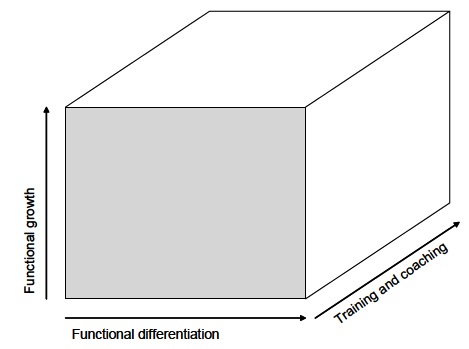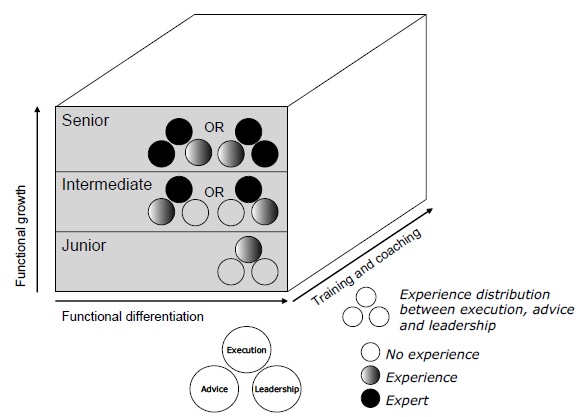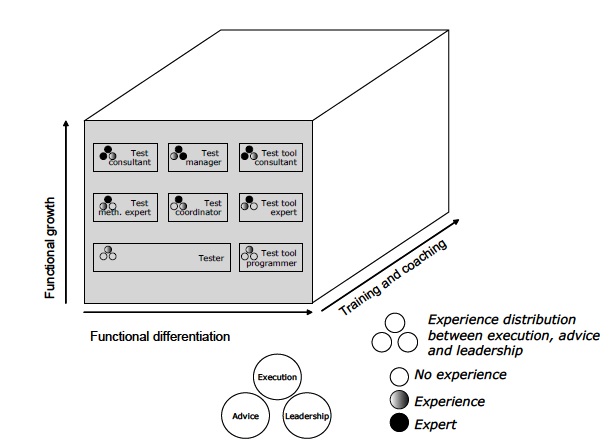| Guideline: Career Path |
 |
|
Relationships
| Related Elements |
|---|
Main Description
One condition to professionalise testing in an organisation is to offer test professionals a career path. This section provides a method to define such career paths. Training, creating work experience and a coaching programme are vital components. These are shown per job type and per level in the socalled career cube (see figure 1 - The career cube). The cube is a tool for career coaching by HRM to align demand from the organisation, the available knowledge and competencies, and the ambitions of test professionals. The three dimensions of the career cube are defined as follows:
First dimension: functional growth Functional growth is about the vertical career path that an employee can follow. This roughly covers three main job categories: junior, intermediate and senior. Classification in these three categories occurs on the basis of the three-role model. It specifies in which 3 types of roles the test professional can act in a test, and therefore where he has experience or is even an expert. The three possible role types are:
The distinction between junior, intermediate and senior is then made as follows (see figure 2 - Functional growth in the career cube):
Second dimension: functional differentiation TMap and the associated career paths make three differentiations in the discipline of testing. The test professional can specialise in one or more of these differentiations, which are:
Together with the 3 role types (executing, advisory and leadership), these three differentiations constitute the various positions a test professional can have. Combined with the 3-bullet model described earlier, this results in figure 3 - Functional differentiation in the career cube.
Third dimension: knowledge and competencies To support the tester in his functional growth and differentiation and to keep in line with demand from the organisation, it is important to offer the right training and coaching. The structure of training and coaching forms the third dimension of the career cube. The training must focus on the profession, related professions (e.g. quality management, requirements), IT knowledge (development environment, languages), competencies (communication), and domain expertise. The coaching concentrates on the attitude and the application of the acquired knowledge and experience. Good coaching is a condition for a wellconsidered career path. Every employee receives support in several ways. It can be provided by a colleague test professional and/or other experienced employees. Beginning testers can be coached by their manager or a suitable coach. As their job level increases, the importance of continuous new practical experience and social competency training grows exponentially in relation to (test) training and coaching and support. The right things must be offered by the organisation. |
Copyright © 2006, Sogeti Nederland B.V. All rights reserved. |


